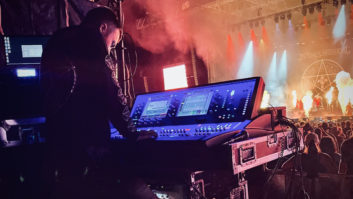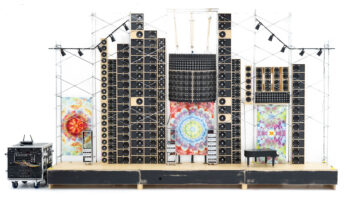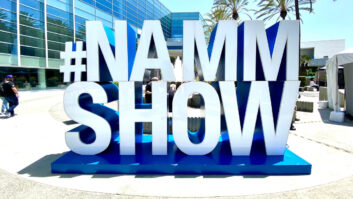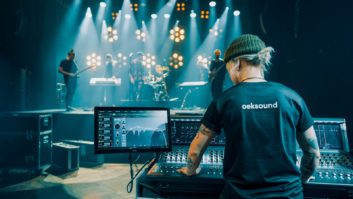Appearances at Baltimore’s Rams Head Live! by Get the Led Out (GTLO), the Philadelphia-based Led Zeppelin tribute band, have become frequent, almost a tradition. The band rocks, the audience jumps, and as in cities across the country, a hot regional band brings high-end live performance to a hungry audience, night after night, in venues ranging from standing clubs (like Rams Head Live!) and seated theaters to outdoor festivals and sheds, with capacities of 250 to 10,000.
FOH engineer and production manager Chris Chalfin has been with the group since 2006. Shortly after joining, he realized that a certain level of consistency was needed for the GTLO sound, and they soon began carrying an audio control package from his production company, Saturn Systems, of Effort, Pa.
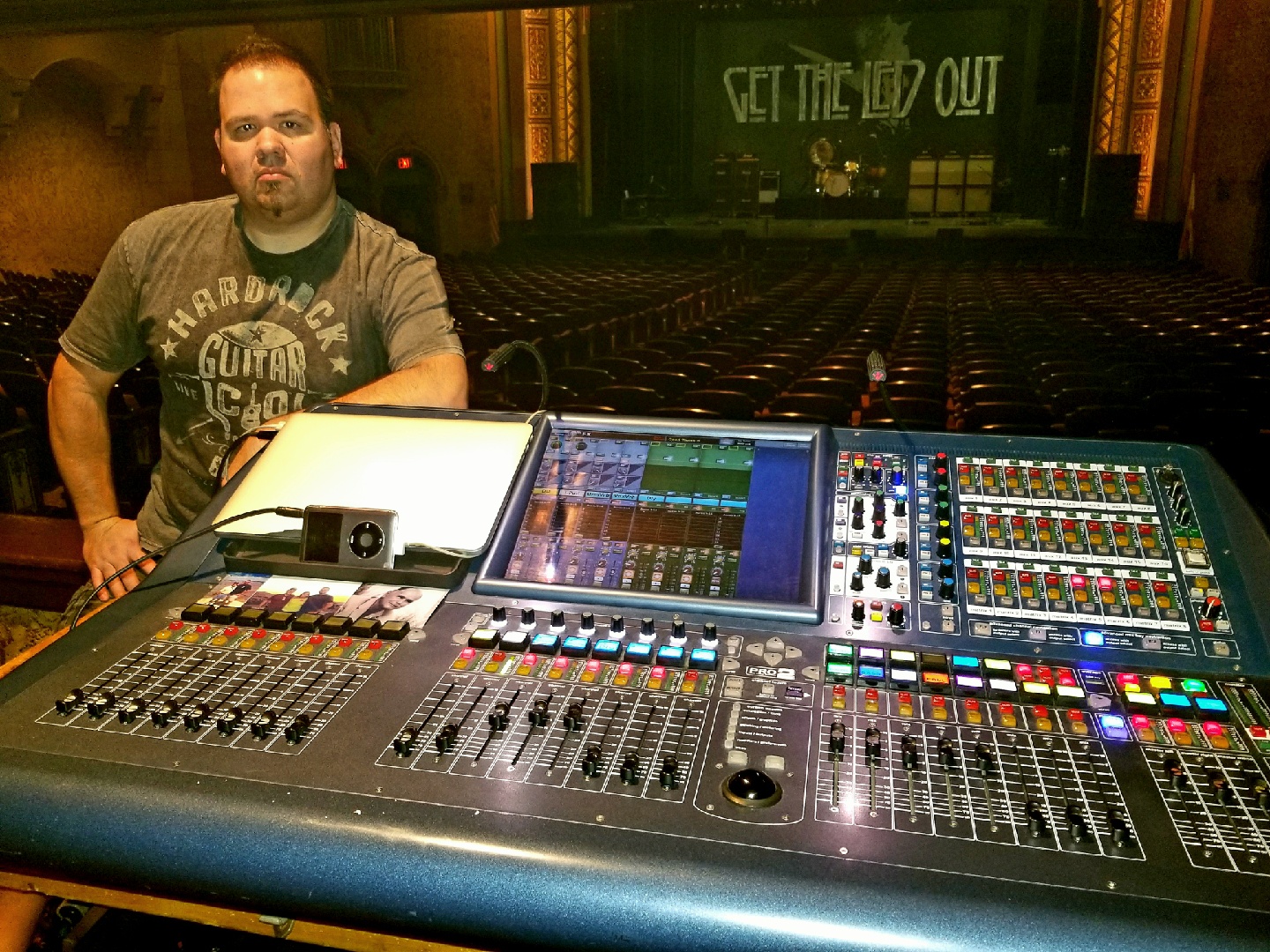
The Package
Chalfin’s FOH and monitor consoles are Midas Pro 2s, each with 64 inputs, and his simple approach calls for using all onboard effects. In its earlier days, “The Pro 2’s onboard effects were very limited,” he says, forcing him to keep one of his outboard effects racks, loaded with TC Electronic and Yamaha units, in tow.
From there, he moved to a software-based Waves Multirack setup, “which worked great for a while, but since Midas upgraded the internal effects in the Pro 2, I did away with everything.” He now opts for the Pro 2’s multiple reverbs, delays, phasers, flangers and other integral tools to replicate “the many different effects that are so prominent in the Led Zeppelin studio recordings.” All effects are recalled on a song-by-song basis, which allows him to concentrate on the mix without distraction.
Related: Green Day Comes Home: Local Heroes Bring Their “Revolution Radio” Tour to Oakland, by Barbara Schultz, Oct. 18, 2017
“We’ve come a long way from the first audio package we put together,” he says, referring to a Soundcraft Series Five, with three racks of outboard gear at FOH. At the monitor position was “a Soundcraft SM-20, with a couple racks of outboard gear. On stage, we had 12 wedges, two drum subs and sidefills that were loud enough to be my front-of-house P.A.”
The majority of the mics on GTLO’s stage are models from Sennheiser and Shure, with the exception of a Neumann KM 184 on the hi-hat and a Telefunken M80 for lead singer Paul Sinclair; Shure Beta58As are used for all other vocals. The guitar riffs are captured with a combination of a Sennheiser e-906 and a Radial JDX; on the drums are a Sennheiser e-602 with a Shure Beta 91A in the kick, both mounted on Kelly suspension systems.
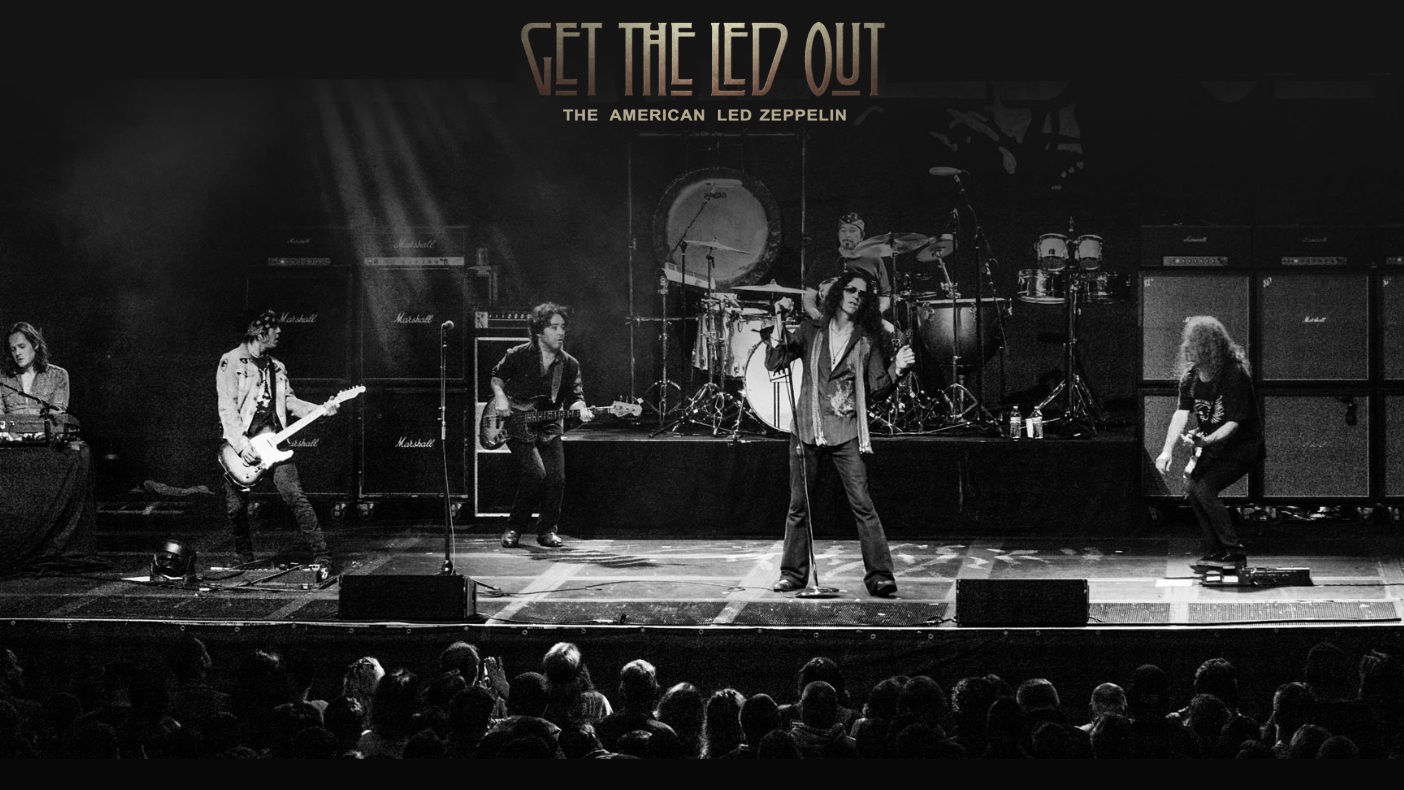
Snare, toms and timpani are all captured with Sennheiser e-604s, and the ride cymbal is picked up with a Shure Beta 98. Rounding out the kit are a couple of Shure KSM-44s for overheads. DIs are all Radials, save for the bass, which runs through an Avalon U5. All stacks and racks, JBL Vertec VT4888 in this case, are sourced locally by the venue or promoter.
What’s Easy?
Chalfin’s approach to achieving that famous sound “is pretty simple,” he says. “Our job is to re-create Led Zeppelin’s studio recordings live. Obviously, technology has come a long way since those recordings were made. The mics, consoles and speakers are all so much better now that it can be tough to re-create that ‘old school’ sound. Instead, I go for what I think Led Zeppelin would sound like today. Virtual Sound Check is a valuable tool to that end, when I tune the P.A.”
Chalfin bases his mix around the drum kit, then builds around it. “I’ll layer in bass, guitars and keys,” he explains. “The challenge is to keep separation between everything so you can hear, and pick out, each instrument. Once I’m satisfied with the band mix, I’ll lay the vocals in on top of everything, then make a few adjustments to get it all to gel.”
Related: Rams Head Goes Live!, April 1, 2005
Noting that he employs 48 inputs from the stage, plus seven stereo effects returns, he called the GTLO mix “very dynamic. The show shifts from a full-on electric song, such as ‘Rock & Roll’ or ‘Immigrant Song’ running an average of 105 dbA, down to an intimate acoustic set that might average 85 to 90 dbA. My motto for mixing has always been ‘Powerful, not painful.’ I want the audience to feel it. I strive to keep it in their face, but without hurting their ears.”
What’s Tough?
The ongoing challenge, says Chalfin, who has also worked with such acts as Halestorm, Ruben Studdard and Avril Lavigne, is “consistency. We play a variety of venues, so I run into systems that range from less than ideal to magical. Rams Head Live! is always a challenge, because that room changes so drastically between being empty at soundcheck to when the show starts. They’ve greatly improved the P.A. during the last year or two by rehanging it, retuning it, adding some proper lip fills across the stage, and getting their sub situation straightened out. All in all it’s become a fun venue to visit.”
Chalfin is hopeful that GTLO will soon carry its own complete P.A. “However,” he says, “I look at the current situation as a great way to keep my chops up and do my best with the tools I’m given.”
Rams Head Live! • www.ramsheadlive.com



